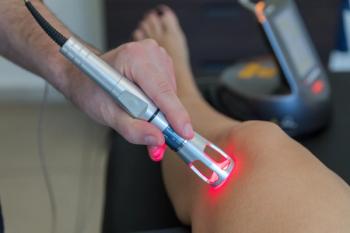
EADV report shows that ixekizumab effectively treats nail psoriasis
Patients who undergo treatment with ixekizumab experience greater nail psoriasis improvement than individuals treated with ustekinumab.
PARISâPatients who undergo treatment with ixekizumab experience greater nail psoriasis improvement than individuals treated with ustekinumab, according to a new study from Lilly Pharmaceuticals.
The study compared treatment results for moderate-to-severe psoriasis patients randomized to ixekizumab and ustekinumab for nail lesions treatment over 52 weeks.
“The results of the IXORA-S study suggest that Taltz (ixekizumab) may provide significantly greater clearance of nail psoriasis than ustekinumab,” said Lotus Mallbris, M.D., Ph.D., Lilly’s vice president of immunology development. “This is significant because nail lesions are a common feature of psoriasis. It’s often associated with discomfort, which can lead to functional impairment and distress, further supporting the importance of complete clearance.”
During the phase 3b, multi-center, double-blind, head-to-head trial, investigators randomized moderate-to-severe psoriasis patients to receive ixekizumab or ustekinumab.
A total of 136 ixekizumab patients received a 160 mg starting dose administered as two 80 mg injections. They then received 80 mg injections every two weeks for 12 weeks, followed by 80 mg injections every four weeks. The 166 ustekinumab patients received 45mg/90mg weight-based doses at zero, four and every 12 weeks thereafter per label.
Investigators assessed each fingernail bed for lesions at baseline and at 52 weeks, determining severity with the Nail Psoriasis Severity Index (NAPSI). They combined scores from zero with no nail psoriasis to 80 with severe nail psoriasis in order to obtain total NAPSI scores.
According to results, 61.8 percent of ixekizumab and 63.3 percent of ustekinumab patients had nail psoriasis. Mean baseline NAPSI scores were 28.3 (SD: 19.9) and 24.8 (SD: 20.0), respectively. Both groups improved.
At 16 weeks, ixekizumab patients had greater resolution than ustekinumab patients (31 percent versus 16.2 percent, p=0.227). At 52 weeks, ixekizumab improvement expanded (61.9 percent versus 28.6 percent, p<0.0001). After 52 weeks, the average NAPSI score improvement was significantly larger in ixekizumab patients (-22.4, 95% CI: -24.8, -20.0) than in ustekinumab-treated patients (-15.6, 95% CI: -17.8, -13.4) (p<0.0001).
Despite substantial improvements in ixekizumab patients at one year, researchers stress the need for more lengthy observational studies to determine long-term results.
REFERENCE
Dutronc Y, Lacour J, Schinzel B, Wasel N. “Comparison of ixekizumab and ustekinumab efficacy in the treatment of nail lesions of patients with moderate-to-severe psoriasis: 52-week data from the IXORA-S trial.” 27th European Academy of Dermatology & Venerology Congress, Paris, France. Sept. 13, 3:40pm-3:50pm.
Newsletter
Like what you’re reading? Subscribe to Dermatology Times for weekly updates on therapies, innovations, and real-world practice tips.
















